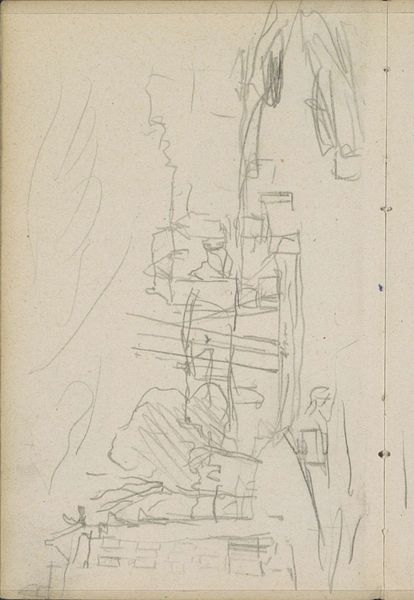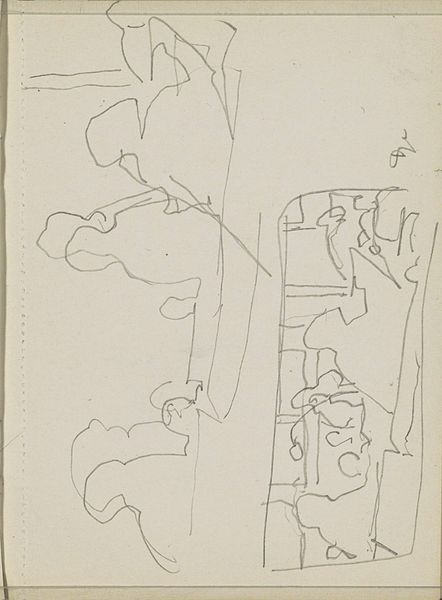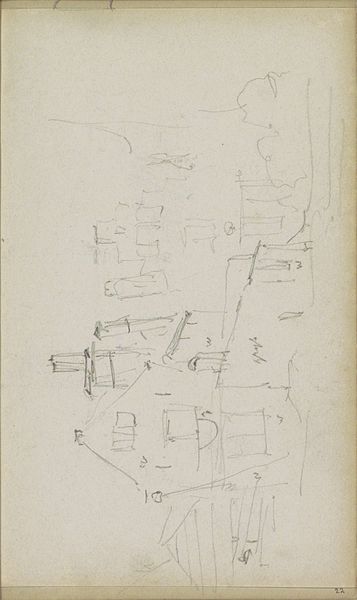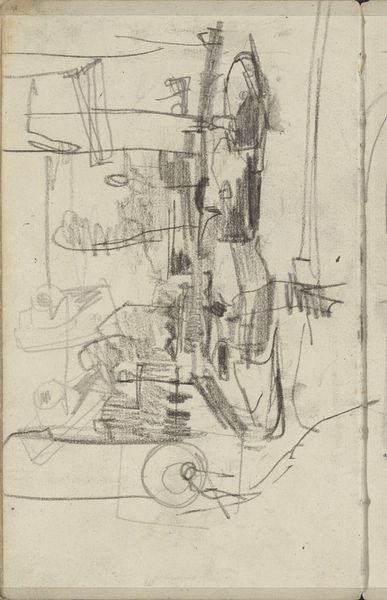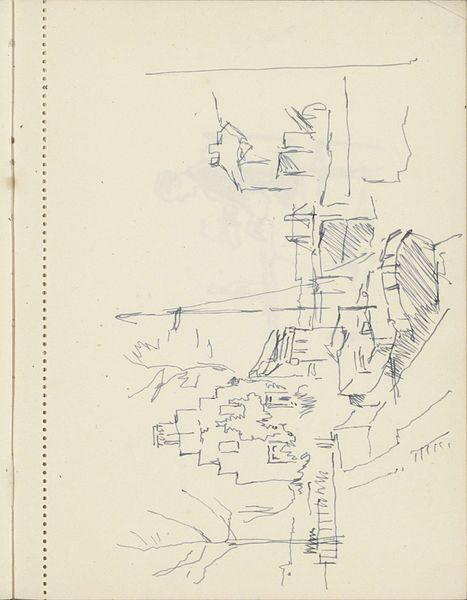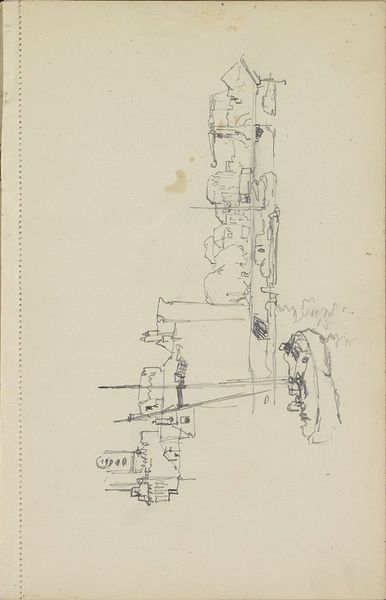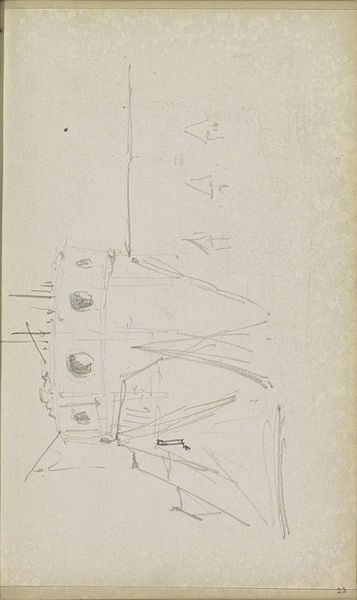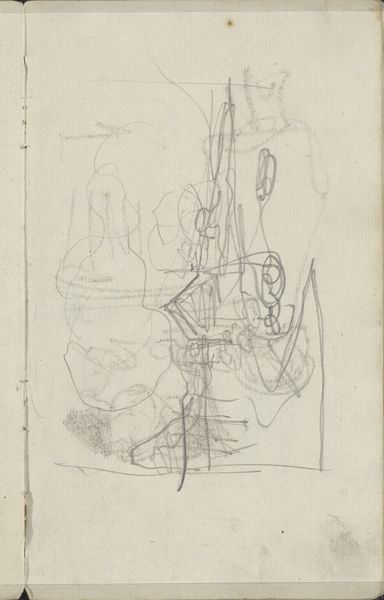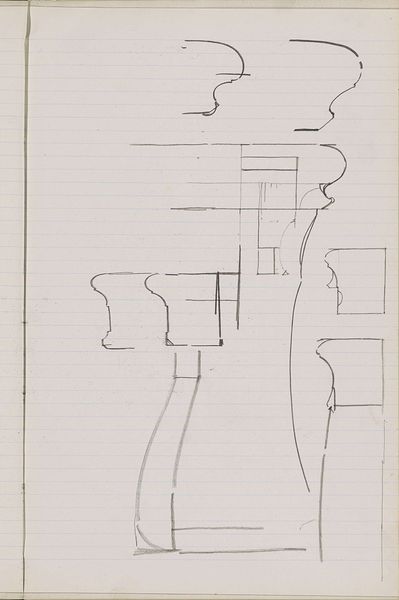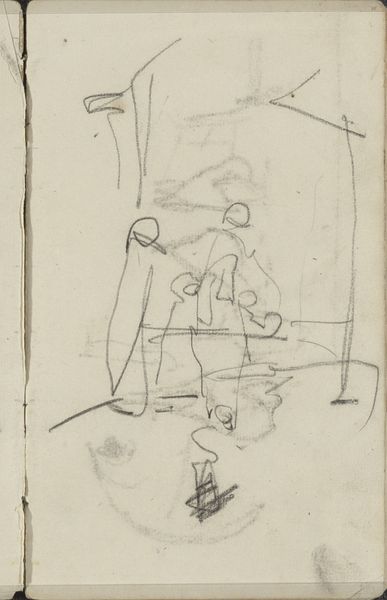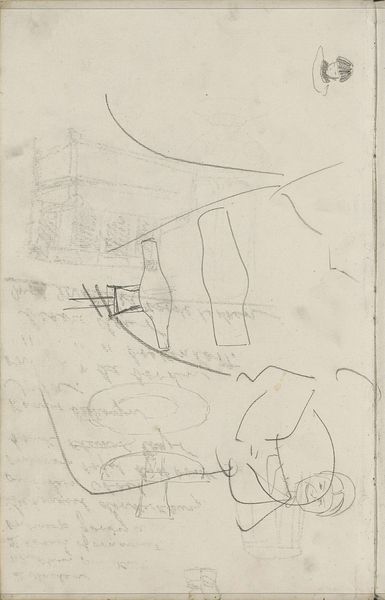
drawing, pencil
#
drawing
#
comic strip sketch
#
light pencil work
#
landscape
#
personal sketchbook
#
idea generation sketch
#
sketchwork
#
ink drawing experimentation
#
pen-ink sketch
#
pencil
#
sketchbook drawing
#
sketchbook art
#
initial sketch
Copyright: Rijks Museum: Open Domain
Editor: This is "Gezicht op een dorp of stad," or "View of a village or town," a pencil drawing by Reijer Stolk, made sometime between 1916 and 1945. It looks like a preliminary sketch. What strikes me is how ephemeral it feels, like a fleeting memory of a place. What do you see in this piece? Curator: I see a web of interconnected signs. Notice how the artist uses minimal lines, yet suggests complex architectural forms. Buildings aren't just buildings here; they are vessels of cultural memory. Each sketched window, each tentative rooftop evokes stories, lives lived, and historical continuities, particularly in the handwriting included directly within the image, to note specific colors for later. Do you think this suggests a blending of memory and direct observation? Editor: That's fascinating, the idea of buildings as vessels of memory! The handwriting seems like a coded language within the landscape itself. Curator: Precisely. Think about how, across cultures and time, architecture and urban landscapes are imbued with symbolic meaning. What feelings arise in you as you look at those buildings that we now see reflected in this drawing? Is there any symbolism within the context of a landscape for you? Editor: I think there's a slight sense of melancholy, perhaps from the ambiguity, the incompleteness. But also, there's a sense of possibility. It's a world still being formed. The incompleteness speaks of change and of a kind of freedom. Curator: Indeed. The act of sketching itself becomes a ritual, connecting the artist to a deeper cultural narrative. These images are vessels. Thank you for so eloquently describing how those memories of lived-in landscapes affect our vision today. Editor: That's so interesting to think about. I will definitely carry a new way of reflecting and relating with this piece!
Comments
No comments
Be the first to comment and join the conversation on the ultimate creative platform.
